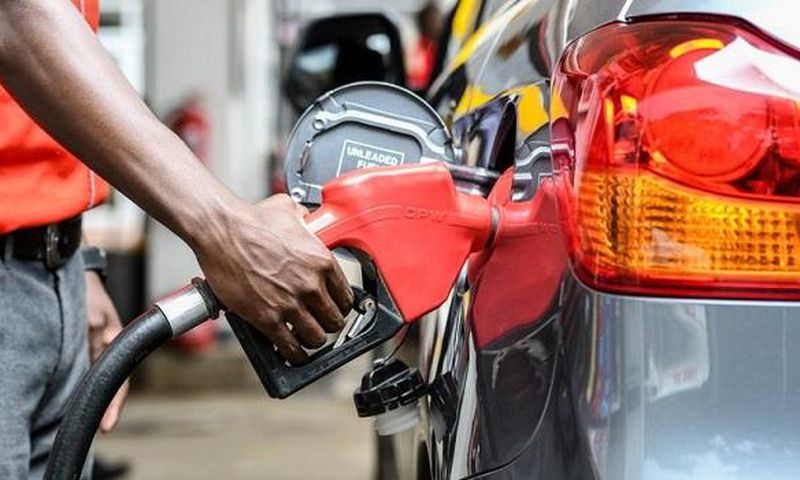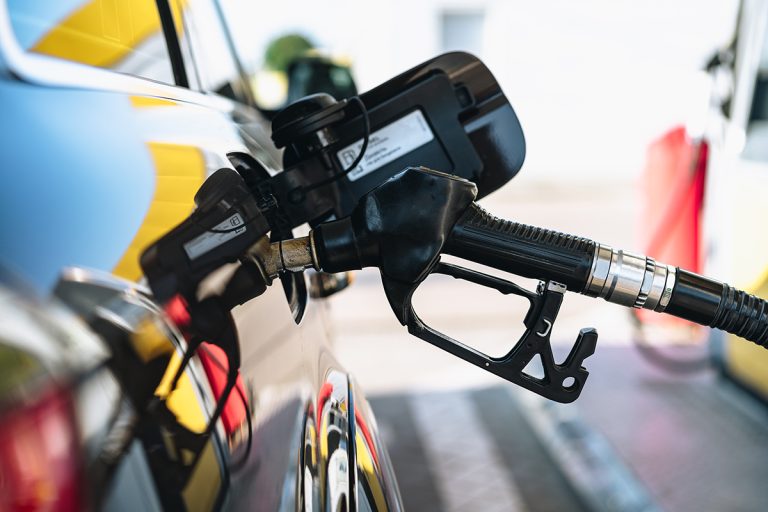Crude Oil and Refined Products Market Review and Outlook
The international market price of crude and petroleum products have been on a downward trajectory since third Quarter (Q3) 2024. The international market price of crude oil declined by about 12.13% on a year-on-year basis. Moreover, refined petroleum products including petrol, diesel, LPG, and kerosene have been on a sharp decline since the second window of February 2025. This downward trajectory is largely attributed to the uncertainties in the global economy introduced by the US – China tariff war. Investors express worry that the retaliatory tariff war may continue to impede global economic expansion and affect demand for crude and petroleum products worldwide.
However, the Israel-Iran war, which started in mid-June, caused a sharp reversal in the decreasing trend of crude and petroleum product prices on the international market due to the attacks on critical oil and gas facilities, such as Tehran’s Shahran Oil Depot, South Pars gasfield (the largest gas field in the world) and threats of closure of the Strait of Hormuz.
The war also attracted the US involvement, where the US attacked three (3) nuclear sides in Iran (Fordow, Natanz, and Esfahan). This resulted in the Iranian Parliament voting for the closure of the Strait of Hormuz, which transits about 20% of global crude. Hence, the price of crude and petroleum rose significantly following the announcement of the showcasing the fragility of the petroleum supply chain. Crude oil prices rose to as high as US$80/bbl before subsiding after the ceasefire agreement.
Crude oil prices in the window under consideration rose by 11.22%, while petrol, diesel and LPG rose by 7.08%, 15.45% and 7.78% respectively. This significant rise is wholly attributed to the impact of the Israel – Iran war. However, following the ceasefire agreement between the two countries, it is expected that crude and petrolum prices at the global market will decline to their levels before the war began. Moreover, it is expected that the agreement by the OPEC+ nations to increase their production in July will further increase lead to a decline the price of petroleum products in the global market.
FuFeX30 and Spot Rates
The Fufex30[1] for the second selling window of June (16th to 30th June) is estimated at GHS11.0000/USD, while the applicable spot rate for cash sales is GHS10.5000/USD based on quotations received from oil financing commercial banks.
|
SUMMARY REPORT OF BANK OF GHANA FX AUCTIONS TO BIDECs |
||
|
Window |
Percentage Offered |
Auction FX Rate (GHS/USD) |
|
1st to 15th April 2025 |
24% |
15.5543 |
|
16th to 30th April 2025 |
18% |
15.5573 |
|
1st to 15th May 2025 |
22% |
14.2877 |
|
16th to 31st May 2025 |
22% |
12.5027 |
|
1st to 15th June 2025 |
36% |
10.3371 |
|
16th to 30th June 2025 |
22% |
10.3284 |
|
1st to 15th July 2025 |
23% |
10.4033 |
The BoG’s biweekly FX auction to BIDECs in the 1st to 15th July 2025 pricing window for the purchase of petroleum products was US$20 million, representing just 23% of BIDECs’ bid. Due to the recent appreciation of the cedi against the US dollar, the BOG interbank is currently selling at GHS10.40/USD. As the cedi continues to perform well against the dollar, we expect pump prices of petroleum products to decline and prices of goods at the markets to also reduce accordingly for consumers.
The Ex-Refinery Price Indicator (Xpi)
The Ex-ref price indicator (Xpi) is computed using the referenced international market prices usually adopted by BIDECs, factoring in the CBOD economic breakeven benchmark premium for a given window and converting from USD/mt to GHS/ltr using the Fufex30 for sales on credit and the spot FX rate for sales on cash.
Ex-ref Price Effective 1st to 15th July 2025
|
Price Component |
Petrol |
Diesel |
LPG |
|
Average World Market Price (US$/mt) |
740.73000 |
722.4800 |
492.1400 |
|
CBOD Benchmark Breakeven Premium (US$/mt) |
200 |
200 |
255 |
|
Spot FX Rates |
10.5000 |
10.5000 |
10.5000 |
|
FuFex30 (GHS/USD) |
11.0000 |
11.0000 |
11.0000 |
|
Volume Conversion Factor (ltr/mt) |
1324.50 |
1183.43 |
1000.00 |
|
Ex-ref Price (GHS/ltr) Cash Sales |
7.4577/ltr |
8.1847/ltr |
7.8450/kg |
|
Ex-ref Price (GHS/ltr) 45-day Credit Sales |
7.8128/ltr |
8.5745/ltr |
8.2185/kg |
|
Price Tolerance |
+1%/-1% |
+1%/-1% |
+1%/-1% |
Taxes, Levies, and Regulatory Margins
Total taxes, levies, and regulatory margins within the 16th to 30th June 2025 selling window accounted for 28.41%, 25.58%, and 15.54% of the ex-pump prices of petrol, diesel, and LPG, respectively.
|
TRM Components |
Petrol (GHS/ltr) |
Diesel (GHS/ltr) |
LPG (GHS/KG) |
|
ENERGY SECTOR SHORTFALL AND DEBT REPAYMENT LEVY |
0.95 |
0.93 |
0.73 |
|
ROAD FUND LEVY |
0.48 |
0.48 |
– |
|
ENERGY FUND LEVY |
0.01 |
0.01 |
– |
|
PRIMARY DISTRIBUTION MARGIN |
0.26 |
0.26 |
– |
|
BOST MARGIN |
0.12 |
0.12 |
– |
|
FUEL MARKING MARGIN |
0.09 |
0.09 |
– |
|
SPECIAL PETROLEUM TAX |
0.46 |
0.46 |
0.48 |
|
UPPF |
0.90 |
0.90 |
0.85 |
|
DISTRIBUTION/PROMOTION MARGIN |
– |
– |
0.05 |
|
TOTAL |
3.27 |
3.25 |
2.11 |
OMC Pricing Performance: 16th to 30th June 2025
Consumers of petroleum products have been witnessing significant declines in pump prices on petrol and diesel in recent times. The Oil Marketing Companies (OMCs) have significantly reduced their pump prices mainly because of the decline in the price at which they purchase the products from the Bulk Import Distribution and Exports Companies (BIDECs). This decline, according to the BIDECs is largely attributed to the decline in the price of crude and petroleum products on the international market and the recent appreciation of the cedi against the US dollar. Crude oil price on the global market declined by about 10% in Q2 compared to Q1, and about 16% compared to same period last year. The decline in global prices has been attributed to increased global production and gloomy global economic growth.
Moreover, the Ghana cedi which was trading at about GHS14.85/USD at end of December 2024 has appreciated significantly, currently trading at about GHS10.40/USD by the commercial banks as at 27th June 2025 (about 30% appreciation). The strong appreciation of the cedi has been largely attributed to a mix of fiscal tightening, improved gold reserves, sound economic policies and global factors including the US – China tariff war.
Due to the performance of these factors, which are the main determinants of pump prices, petrol, diesel and LPG, pump prices have declined significantly since January by 23%, 19%, and 20% respectively. This decline has brought great relief to petroleum product consumers. However, the recent Israel – Iran conflict has resulted in a significant rise in international price of crude and other petroleum products. It is expected that the rise in global crude prices due to the Israel – Iran war will lead to a slight increase in the prices of petroleum products in the coming window.
In the window under review, petrol declined by 3.3% due to the appreciation of the cedi and the decline in global crude prices. Average price of Petrol at the pumps are down by 22.63% year to date and down by 19.61% on a year-on-year basis.
The average pump prices of diesel and LPG declined by 0.01%, and 7.54% respectively compared to a decline in last window of about 7.58%, and 6.97% respectively. On a year-on-year basis, both products are down by 11.80%, and 10.79%, respectively. This significant decline has brought major respite to consumers of petroleum products across the country.
The current Israel-Iran war and the resultant spike in crude prices in the global market is expected to impact pump prices in Ghana in the coming pricing window given that the cedi has stabilized against the US dollar in recent weeks. Moreover, the continual abrupt laycan disruptions continue to the impact of the sustainability of the Sector. The CBOD has consistently indicated the impact of the laycan disruption on importers and consumers estimating a cost burden of between GHp 47 to GHp60 per liter. This implies that with a transparent and efficient laycan allocation and management system, consumers will be relieved of about GHp60 on every liter of petroleum products they consume.
[1] The Fufex30 is a 30-day GHS/USD forward fx rate used as a benchmark rate for BIDECs ex-ref price estimations.





